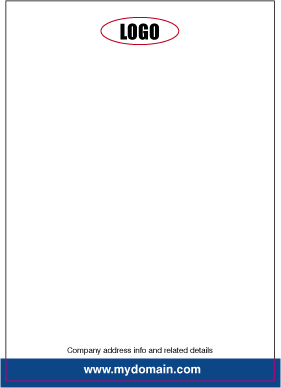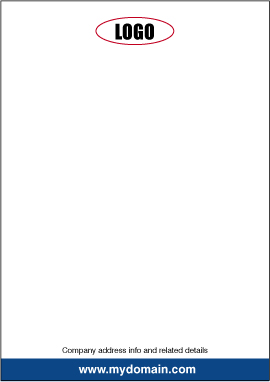Abrasion Resistance
Resistance to frictional rubbing as distinct from resistance to knocks and impacts. Abrasion tests may be made by means of the finger alone, or with a cloth or a pad with or without a mildly abrasive powder. The pressure, speed and time of rubbing as well as the character of the rubbing agent should be controlled when making comparisons of abrasion resistance.
ABS
Acrylonitrile-butadiene-styrene, a thermoplastic. Has good impact resistance and a surface that is easily decorated.
Absolute White
In theory, a material that perfectly reflects all light energy at every visible wavelength. In practice, a solid white with known spectral data used as the “reference white” for all measurements of absolute reflectance.
Acetate
Thin, flexible sheet of transparent plastic used to make overlays.
Accordion fold
Bindery term, two or more parallel folds which open like an accordion.
Against the grain
At right angles to direction of paper grain.
Alley
Space between columns of type on a page.
Alteration
Change in copy of specifications after production has begun.
Artboard
Alternate term for mechanical art.
ASCII
Acronym for American Standard Code for Information Interchange, a standard code used to help interface digital equipment.
Author’s alterations
Client’s corrections/changes made at the proofing stage.
Back up
Printing the second side of a sheet already printed on one side.
Banding
Method of packaging printed pieces of paper using rubber or paper bands.
Basis weight
Weight in pounds of a ream of paper cut to the basic size for its grade.
Binding
Process of fastening papers together.
Bitmap
A grid of pixels or printed dots generated by computer to represent type and images.
Bleed
The printed image extends beyond the trim edge of a sheet or page. A bleed may occur at the head, front, foot and/or gutter of a page.
Blind embossing
An image pressed into a sheet without ink or foil.
Bond paper
Strong durable paper grade used for letterheads and business forms.
Burn
Exposing a printing plate to high intensity light or placing an image on a printing plate by light.
Burst perfect bind
To bind by forcing glue into notches in spines of signatures, and then adhering a paper cover.
Butt
Joining images without overlapping.
Butt fit
Printed colors that overlap one row of dots so they appear to butt.
C1S
Paper coated on one side.
C2S
Paper coated on both sides.
Caliper
Paper thickness in thousandths of an inch.
Carbonless paper
Paper coated with chemicals that enable transfer of images from one sheet to another with pressure from writing or typing.
Case bind
A type of binding used in making hard cover books using glue.
Cast coated
Coated paper with a high gloss reflective finish.
Chrome
A term for a transparency.
Coated paper
A clay coated printing paper with a smooth finish.
CMYK
Abbreviation for cyan, magenta, yellow and key (black), the 4 process colours, which combined together in varying proportions can be made to produce the full colour spectrum.
Collating
arranging of printed sheets into the desired sequence.
Colour correction
Methods of improving color separations
Colour matching system
A system of formulated ink colors used for communicating color.
Colour separations
The process of preparing artwork, photographs, transparencies, or computer generated art for printing by separating into the four primary printing colours.
Comb bind
To plastic comb bind by inserting the comb into punched holes.
Comp.
Short for Comprehensive dummy
Composite film
Combining two or more images on one or more pieces of film.
Continuous-tone copy
Illustrations, photographs or computer files that contain gradient tones from black to white or light to dark.
Contact print
Photographic print made by exposing a negative in direct uniform contact with paper.
Contact sheet
Alternate term for Proof sheet.
Colour separation
process by which a continuous tone colour image is separated into the four process colours for print production.
Copyright
Ownership of creative work by the writer, photographer, or artist who made it.
Copywriter
Person who writes copy for advertising.
Corner marks
Lines on a mechanical, negative, plate, or press sheet showing the corners of a page or finished piece.
Corrugated
Characteristic of board for boxes made by sandwiching fluted kraft paper between sheets of paper or cardboard.
Cotton content paper
Paper made from cotton fibers rather than wood pulp.
Cover paper
A heavyweight paper made particularly to protect inner, thinner sheets of such printed items as booklets.
Crop marks
Marks at the edges of an illustration or photograph to indicate the portion to be reproduced.
Crossover
Image that continues from one page of a publication across the gutter to the opposite page.
Cyan
One of the four process colours; also known as process blue.
DPI
Dots per inch; measure for output resolution of various devices.
Dummy
A mock-up made to resemble the final printed product which uses the proposed grade, weight, finish and colour of paper.
Estimate
A price given to a customer based on specifications provided by the customer. The price can change if the order specifications are not the same as the estimate specifications.
Flush
Even with (as with to a margin).
Four-colour process
Reproduction of full-colour photographs or art with the four basic colours of ink (yellow, magenta, cyan, black).
Gutter
Line or fold at which facing pages meet.
Halftone
Picture with shades of tone created by varying size dots.
Imagesetter
a device that plots high-resolution bitmaps which have been processed by a RIP. May include type, graphics and photographic images. It outputs a to film or paper.
Justified
text which is flush to both the left and right margins.
Line copy
copy which can be reproduced without using halftones.
Make-ready
the work associated with the set-up of printing equipment before running a job.
Over-run
copies printed in excess of the quantity specified in the order.
Perfect binding
a bookbinding method in which pages are glued rather than sewn to the cover. Used primarily for paperback books.
Point
a measurement for the size of type, distance between lines and thickness of rules. One point equals one seventy-second of an inch (0.3515mm).
Ragged right
typesetting style in which lines end in unequal lengths on the right side (usually justified on left).
Registration marks
crosses or other marks placed on artwork which ensure perfect alignment (‘registration’).
Reversed-out
type appearing white on a black or colour background, either a solid or a tint.
Resolution
the number of dots per inch (dpi) in a computer-processed document. The level detail retained by a printed document increases with higher resolution.
RIP (raster image processor)
computer used to create an electronic bitmap for actual output. This may be built into an imagesetter or may be separate.
Saddle stitch
a binding process in which a pamphlet or booklet is stapled through the middle fold of its sheets using saddle wire.
Score
a pressed mark in a sheet of paper, usually a thick paper, to make folding cleaner and easier.
Self-cover
the paper used inside a booklet is the same as that used for the cover and is generally printed on the same press run.
Signature
folded, printed paper forming a section of a book; usually in a multiple of four, and more often a multiple of eight.
Solid
an area on the page which is completely covered by the ink.
Stock
the paper or card which is to be printed on.
Transparency
or slide: 35mm, 4″ x 5″ or 8″ x 10″ positive image on film which can be projected on a screen or scanned as artwork.
Tint
an area of tone made by a pattern of dots, which lightens the apparent colour of the ink with which it is printed.
Glossary of Printing Terms in the UK
For more technical printing terms please see this page here: Wikipedia


